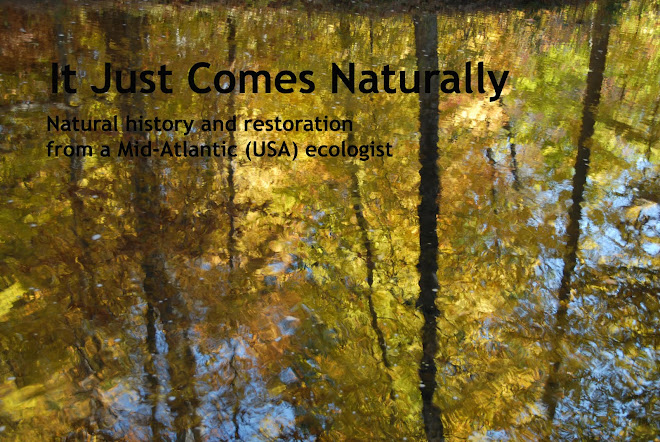 Porcelainberry (Ampelopsis brevipedunculata)
Porcelainberry (Ampelopsis brevipedunculata)  Porcelainberry shroud
Porcelainberry shroud Mile-A-Minute (Polygonum perfoliatum)
Mile-A-Minute (Polygonum perfoliatum) Persimmon fruit
Persimmon fruit (
Diospyros virginiana)

 Persimmon bark
Persimmon bark
I love the tree's blocky, dark-gray bark during any season of the year.
 I had occasion to explore a wet meadow this morning and took some images while I was walking around with water nearly flooding into my L.L. Beans. I liked the misty background that I got in this image; it was cloudy, but it wasn't foggy.
I had occasion to explore a wet meadow this morning and took some images while I was walking around with water nearly flooding into my L.L. Beans. I liked the misty background that I got in this image; it was cloudy, but it wasn't foggy. A different perspective: here's the wet meadow from the hillside above.
A different perspective: here's the wet meadow from the hillside above. On the hillside, witch-hazel (Hamamelis virginiana) was blooming. (Don't you just love to say that generic name?) Witch-hazel is the last woody plant to bloom each year. Can you believe that this shrub is fairly closely related to sweetgum trees (Liquidambar styraciflua)? They're in the same family. There's a bright red sweetgum in the background of the image above.
On the hillside, witch-hazel (Hamamelis virginiana) was blooming. (Don't you just love to say that generic name?) Witch-hazel is the last woody plant to bloom each year. Can you believe that this shrub is fairly closely related to sweetgum trees (Liquidambar styraciflua)? They're in the same family. There's a bright red sweetgum in the background of the image above. A close-up of the witch-hazel flowers. I wonder if the flowering time has anything to do with the plant's common name?
A close-up of the witch-hazel flowers. I wonder if the flowering time has anything to do with the plant's common name?






































